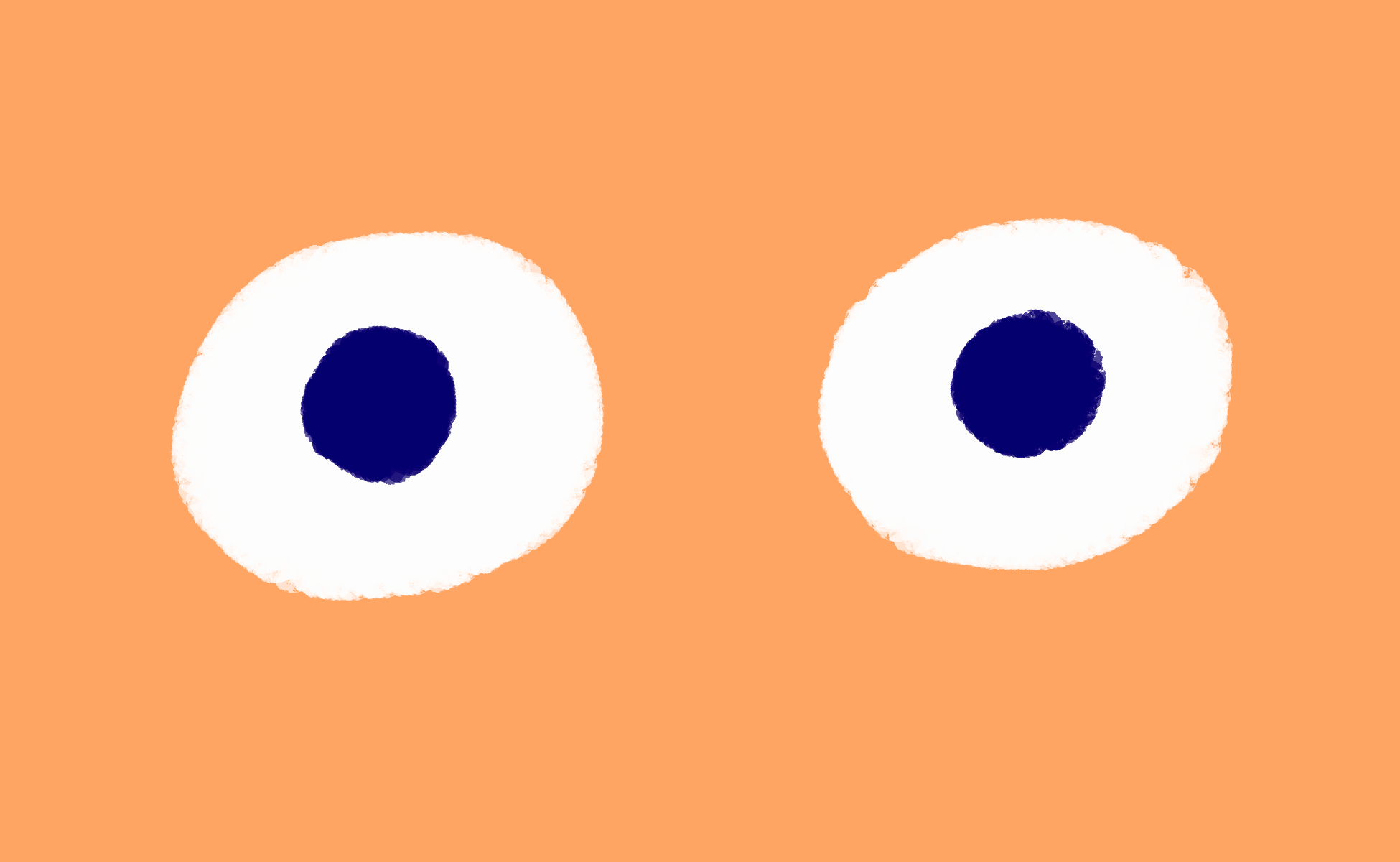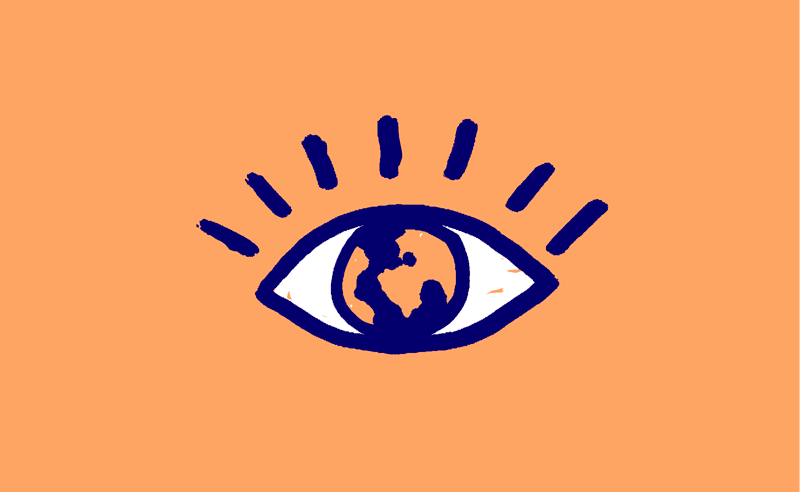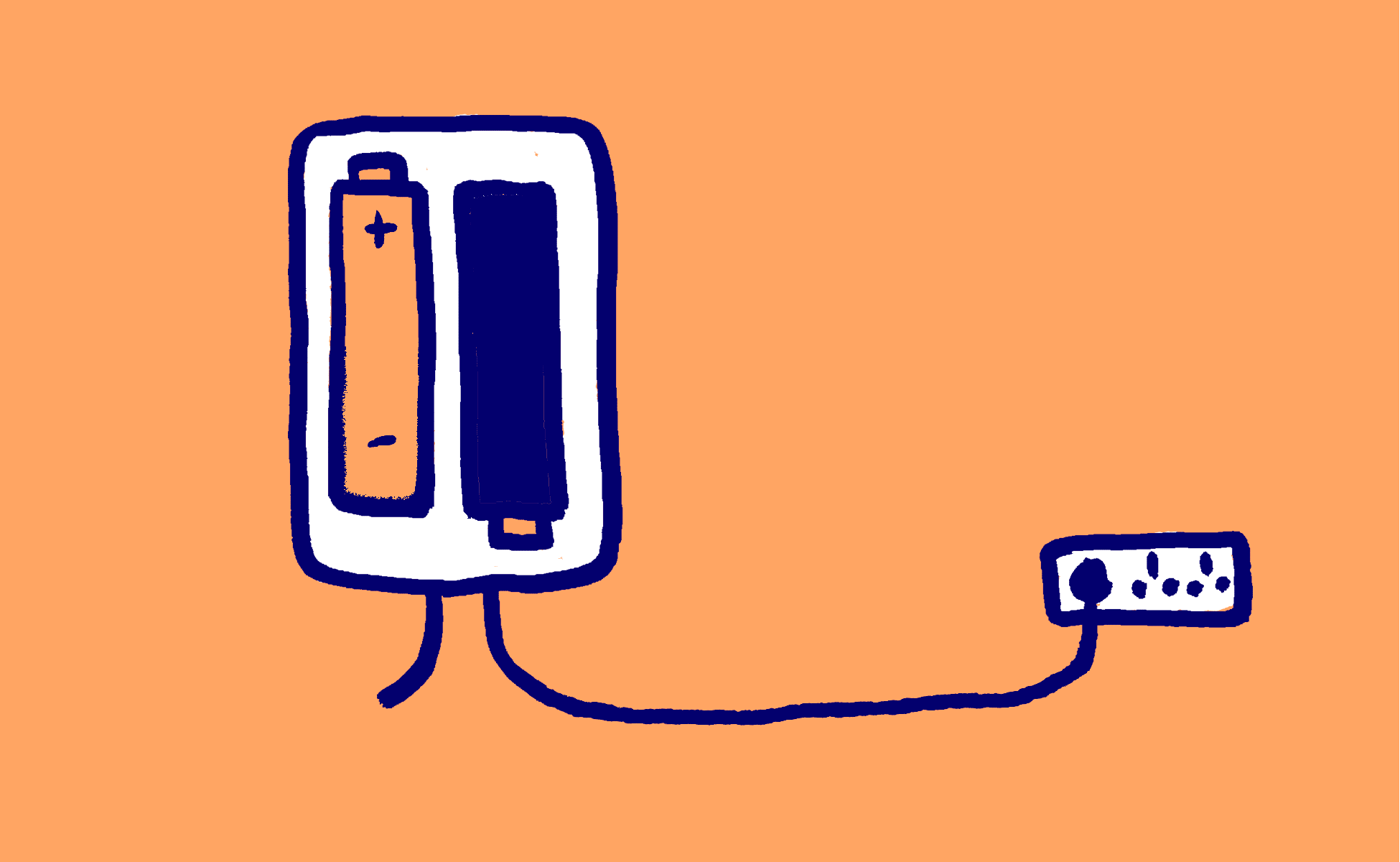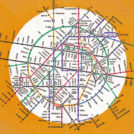How about saying no to video advertising screens in public spaces?
In the land of Decaux lollipops...
There's one subject that might seem delicate to tackle when you work in communications: the issue of video advertising screens in public spaces!
You might think that criticising these devices would be like shooting yourself in the foot. Yes, more advertising screens, so more advertising, so more customers...
Except that... we too find it annoying to feel our gaze trapped by these screens that impose themselves on us so ruthlessly! We may be part of the big family of communications agencies, but that doesn't stop us from having a definite point of view on the subject!
Haven't you already had that experience on an underground or train platform? That moment when your eyes are irresistibly drawn to that moving thing... an advert for shoes? Personally, at that moment, I'd rather not be disturbed in my thoughts!
In short, we're going to talk to you about a serious subject.
And even if the article is a little long, it deserves to be read and shared!
We will be talking about the economy of attention, visual ecology, JC Decaux, cheap stares... and above all about these " Local Advertising Regulations" that are being voted on just about everywhere in France, and against which each of us can take action! We will see how at the end of the article.
So...action... reading can begin !
Paris and JC, it's over
Exclusive: Paris splits from JCDecaux! The wind has changed and the juicy contract between the city and the advertising company is looking like a divorce. JCDecaux was taken off the cusdoty for its little Velibs, and the break-up was brutal, with a rejected advertising contract that promised - among other things - the installation of digital screens in Paris. A love story in 3 seasons that ends badly, but that is far from being the last episode. We're not going to spoil too much by telling you that the final episode will revolve around the Olympic Games advertising deal.
1 - The story begins with a public contract that turns sour. JCDecaux had won the bid, and proposed 15% digital screens in its original contract. The problem was that these digital screens were prohibited under the Paris Local Advertising Regulations (art P4.1.1). The broadcasting of illuminated digital advertising on screens in Paris is now illegal in public spaces. Two competing companies are taking legal action and the contract with Paris - JCDecaux contract was revoked.
2 - Stopped in his tracks, the city had no time to relaunch a call for projects to bounce back. Paris is forced to put in place a 2nd contract with JCDecaux by mutual agreement (= without a call for bids) from January 2018 to August 2019. The aim is to avoid a period of advertising void and above all not to cut off the inflow of money on which the city is counting (there is talk of €24m).
3 - But this second contract was terminated again in December by the Conseil d'État, because it had been carried out without a call for bids. The City Council argued that there was an imperative need for a communications medium to share municipal information. This argument was rejected by the Conseil d'État, which considered that Paris had a plethora of other means of communication, and that the absence of municipal advertising on street furniture (= on JCDecaux supports, if you follow) was not an obstacle.
"Pas de bras, pas de sucette en chocolat ?"as we say in French
As a result, JCDecaux has been forced to take down its 1,630 advertising lollipops in Paris and leave them in their natural state, grey. Until August 2019, Paris will therefore be an advertising-free capital. A lull that heralds the storm to come...
Until now, advertising decisions were taken at national level. However, regulations have recently been transferred to the cities, which must approve their local advertising regulations (LAR) by 2020. Town councils will now be responsible for " regulating advertising devices and brand", which means that they will be able to proliferate illuminated screens in their towns if they wish, or to apply for exemptions to install advertising near listed monuments, for example.
Illuminated and digital advertising are " specifically regulated in terms of surface area, luminance, energy consumption and anti-glare devices "... but not in terms of number or location.
With the Olympic Games coming up, City Hall has a superb opportunity to revise its LAR and give Paris's advertising a new look!
When you consider that the old contract between JCDecaux and Paris brought in €4 million for the city, and that the first contract, which was terminated with its 15% digital screens, was worth €30 million, you'd think that this would be a good source of revenue for the public purse...
Our gaze is not worth much!
30 million euros sounds like a lot. On the face of it, you might think it's the same as the budget for Parisian libraries or crèches. But when you put that in relation to the municipality's budget of 8 billion euros, you realise that it only represents 0.3% of the municipal budget.
Let's try another calculation to get a better idea of the ridiculous profits from these video advertising screens. Let's calculate how much the community gains from "watching these ads". Let's assume that there are 2.5 million inhabitants whithin Paris itself, and that every Parisian watches at least one ad every day, i.e. 2.5 x 365 days = 912 million glances.
Add the 35 million views from tourists, and the millions of French people who regularly pass through Paris. This adds up to around a billion eyeballs.
30 million euros / 1 billion glances = 0.03 centimes.
So each glance is worth 0.03 centimes. In fact, it's as if JCDecaux were paying us €0.03 a day, or just under €1 a month, to look at their advertising screens!
I don't know about you, but I can't see why I'd prostitute my eyes for less than €1 a month! It's a ridiculous sum for the damage it causes us, from a visual, ecological and human point of view.
The digital advertising screen is a predator!
It's funny, because today advertising is banned near national parks or listed monuments, but not in stations or the underground. We protect nature and old stones, but we don't spare humans? With the power of the moving image, it's almost impossible not to watch an advert on a screen.
Our relationship with images has been completely overturned, and our eyes are instinctively taken hostage in this urban landscape. Whereas the graphic designer applies himself consciously to attracting the eye with his palette of colours and shapes, the animated image titillates the primal reflexes of our reptilian brain. It activates our survival mode. It's a bit like a forest, in fact: if you're out for a walk, you're bound to notice a few pretty, shimmering flowers or contrasting branches, but if a leopard jumps out in the distance, all you'll see is him (we're more in the Amazon than Ermenonville) and you'll run for your life. Except that here, you can't escape, because unlike our mobile screens, on which you can add an ad blocker, it's impossible not to look at an animated screen.
As this article in Le Monde explains, " this technology exploits the fact that any moving image in the periphery of the visual field automatically captures the individual's attention. This automatic reaction, a legacy of our evolution during which danger could arise without warning, is accompanied by an increase in the level of alertness and stress that encourages the message to be memorised". A hostage situation, in other words, with increased cognitive overload. It's professional work!
In fact, by opening up the public space to these screens, we're unbalancing the relationship between the message and the viewer... in the case of static advertising, the viewer still had a "little" choice not to look. With screens... there's no escape... It's a bit like the difference between small-scale fishing and deep-sea fishing. With video screens, no viewer can resist!
Street harassment!
Added to this is the fact that these screens are equipped with cameras, turning us into unwitting guinea pigs. As well as analysing the time spent watching animated advertising and the path taken by our gaze, these screens detect our gender, age and movements in certain places. However, the CNIL specifies that " clear information must be displayed in places where these devices are installed in order to guarantee real transparency vis-à-vis the public" , but we have never seen anything written on the screens, have we? Perhaps there's enough here to make the law work in favour of individual freedom!
A few months ago, the newspaper Les Echos reported the story of a Belgian MP who was quietly waiting for her tram when, just beside her, the frame of her bus shelter advertising panel contained the lens of a webcam, without any justification. " I'd love to know what purpose this serves on the cost of LED ads", she immediately reacted in a tweet denouncing the inquisitive eye. Of course, officially, the cameras were not activated at the time, and were not intended to count the audience. The official purpose of these terribly discreet cameras was to carry out marketing actions, for example by making the head of a passer-by appear in an advert." But who is monitoring this software? Should we take the word of these communicators? I'm sure there's some data collection going on. "
If advertising is suspected of systematic "tracking" in the public space, it is not without unfounded suspicions! Last February, the Conseil d'État upheld a previous veto by the CNIL, the French Data Protection Authority, denying JCDecaux the right to study the flow of passers-by on the slab at La Défense using... their mobile phones. The idea of the world leader in outdoor advertising was to capture the MAC addresses of smartphones for a month, via WiFi boxes discreetly installed on its advertising totems. This enabled the company to reconstruct their comings and goings, in order to fine-tune the audience in one of Europe's main business districts, which is visited daily by 170,000 employees. The highest administrative court ruled that there were insufficient guarantees that the data collected would be anonymised.
For the time being, the CNIL can still take action against these few experiments, but what will happen when all the pavements are equipped with video advertising screens fitted with cameras on which you will have to wear glasses to read the legal notices in size 5!
From the economy of attention to the ecology of attention!
With these advertising boards, we're also right in the middle of the attention economy. We are reminded of the famous line by the former chairman of TF1, Patrick Le Lay : "What we sell to Coca-Cola is available brain time". Back in the mid-1990s, the German sociologist Georg Franck pointed to these new advertising and media devices: a new "mental" capitalism, he argued, was now at work: attention is the new currency!
We invite you to watch this short video by Yves Citton (2min), who prefers the idea of the ecology of attention to that of the economy of attention!
Us, we prefer Yves Citton to Patrick Le Lay!
Energy-guzzling panels!
The icing on the cake is that these 2-faced digital screens consume 13 times more energy than conventional backlit displays, equivalent to the energy consumption of a family over 24 hours. Not to mention the environmental impact linked to the production of these large screens (which also applies to our consumption of computers and smartphones, as this article explains: " the manufacturing phase is more energy-intensive than the phase of use of the product by consumers. It also emits more CO2, since these components are manufactured in China or Korea, whose electricity comes from coal and is therefore a major contributor to global warming". For more information, take a look at this website, which explains what goes on behind the scenes of screens and smartphones.
On this point, JC Decaux and the Mayor of Paris are showing undeniable bad faith. Their argument: the digital screens would make it possible to limit the number of motorised journeys made by the billposter who, thanks to "remote management" (i.e. management from a distance), no longer needs to travel physically to change the posters, which would limit the number of motor vehicles, of which there are 250.
Even if the reduction in travel is significant, there is still the maintenance of the digital signage, which JCDecaux itself promises will be daily and motorised, and which requires as much if not more control and cleaning than the scrolling panels. In short. Argument brushed aside.
However, town councils have plenty of other good arguments for encouraging the development of this type of digital advertising medium.
We've collected the best ones for you:
- Jean-Michel confident: " It's part of the future" (ah yes, it's progress, there's nothing we can do about it)
- Jean-Michel Security: " these digital media are more agile for passing on information in the event of a crisis or terrorist attack" (if not, there's Twitter)
- Jean-Michel Nice: " this budget allows us to finance crèches" (the JCDecaux fee represents 0.3% of Paris's total budget, so there must be enough money elsewhere to finance crèches, no?)
But in reality, the Jean-Michel who wins every time is the one who says all that but is still thinking that €30 million is still nice.
Some cities, such as SaoPaolo and Grenoble, decided to ban advertising several years ago and are no worse off for it. Apart from the fact that cultural communication is reduced (often on the back of traditional advertising, on street furniture), we need to think about new responsible advertising solutions financed by the city.
before / after
The successful example of Grenoble!
In 2014, when Grenoble mayor Éric Piolle decided not to renew the city's contract with JCDecaux, the decision was far from insignificant and provoked a great deal of reaction.
The idea was to free Grenoble from advertising in order to "develop places of public expression", reduce children's exposure to aggressive advertising and plant trees! We weren't even talking about video screens at the time!
And the economic impact? A loss of 0.1% of the municipal budget. Suffice to say that the people of Grenoble quickly digested the tiny pill, and there are still just as many crèches!
But wasn't advertising good for business?
In reality, we know that "only multinationals" have financial access to poster campaigns. So this measure is a step in the right direction towards better protection of local businesses, by regulating the omnipresence of major groups in public spaces. In short, the Grenoble example is a success.
That's why we have to say no to video advertising screens in public spaces:
Quite simply because video advertising screens...
...are in excess. On average, we receive between 1,200 and 2,200 advertising messages a day.
...they consume an incredible amount of energy. The equivalent of a 4-person household!
...turn us into guinea pigs. Their cameras capture our gaze (in both senses of the word) and analyse our movements.
...dumbing us down, and our children too. They influence our tastes, our needs...
...convey every possible cliché. Sexist representations, social stereotypes...
...are a source of visual and light pollution.
...glorify the consumer society.
...harm small retailers.
...generate almost no revenue for the city.
In a nutshell... We absolutely have to say no!
So what are we doing
to change all this?
As we have seen, cities must vote on their " local advertising regulations " before 2020. That's why, since January, almost all French cities have been in the public consultation phase. Citizens are having their say to change things. Well, in theory. And that's where you come in!
In Lyon, the Plein La Vue collective is offering a one-click anti-digital advertising letter generator that you can send to David Kimelfeld, President of the Metropole. They are also offering a petition to sign, with over 11,000 participants to date.
Lyon has already signed a contract with JCDecaux for the installation of 5,000 bicycles, including 2,500 electric bicycles, by 2020 AND connected screens on street furniture. The city of Lyon's decision already seems to be a foregone conclusion, and we wonder what purpose this public consultation phase will serve...
In Paris, this public consultation phase ends on 2 May! Between now and then, you can get involved locally by visiting https://stop-pub.video/participer-localement/ and signing petitions or taking part in various demonstrations.
And in the rest of France? It's difficult to collect information and petitions from every town in France. But if you know of any action in your town or city, leave us a comment and we will add to our article!
Finally, in any case, we invite you to share and disseminate the information as widely as possible, to prevent our public spaces from becoming nothing more than public-itary spaces by 2020!
Our sources :
Paris
www.lemonde.fr/politique/article/2018/02/05/jcdecaux-contraint-de-demonter-ses-1-630-panneaux-publicitaires-a-paris_5252129_823448.html
www.telerama.fr/sortir/panneaux-jc-decaux-vides-paris-peut-elle-devenir-la-premiere-capitale-sans-pub,n5437189.php
Lyon
www.lyoncapitale.fr/Actualite/Lyon-les-anti-pub-s-attaquent-aux-panneaux-videos/
www.grandlyon.com/fileadmin/user_upload/media/pdf/grands-projets/concertation-reglementaire/20180119_rlp_dossier-concertation.pdf
www.lyoncapitale.fr/Actualite/Lyon-les-anti-pub-s-attaquent-aux-panneaux-videos/
Ad-free city
www.slate.fr/lien/48139/sao-paulo-ville-sans-pub-paris
Actions in the city
https://stop-pub.video/pourquoi/
http://pleinlavue.frama.io/generateur-d-email/
www.change.org/p/david-kimelfeld-des-arbres-pas-des-pubs-lib%C3%A9rons-la-m%C3%A9tropole-lyonnaise-de-la-pression-publicitaire
publicity mischief
http://www.affichage-dynamique-facile.com/ecran-dynamique-attire-attention/
https://www.cnil.fr/fr/mesure-de-frequentation-et-analyse-du-comportement-des-consommateurs-dans-les-magasins
https://stop-pub.video/pourquoi/
Finally, there's always screen hacking:
Share this post:















 San Serriffe typographic Island
San Serriffe typographic Island Design, creativity and oblique strategies!
Design, creativity and oblique strategies! Tote bag, a new social totem?
Tote bag, a new social totem? Sister Corita Kent, the Pop Art nun
Sister Corita Kent, the Pop Art nun Donald Trump, the martyr who makes history
Donald Trump, the martyr who makes history Skaal, 360° real estate service – Visual identity
Skaal, 360° real estate service – Visual identity République – Grolée-Carnot – Street branding
République – Grolée-Carnot – Street branding Fondation for educational success – Visual identity
Fondation for educational success – Visual identity Paris Observatory – Brand design
Paris Observatory – Brand design Chemlys – Brand identity
Chemlys – Brand identity Evolution of the Paris metro map: from spaghetti dish to futuristic city
Evolution of the Paris metro map: from spaghetti dish to futuristic city L’Autre Soie, a participative visual identity!
L’Autre Soie, a participative visual identity! Maurits Escher’s impossible reality
Maurits Escher’s impossible reality MICKEY CHEATER ! Semiological chronicle
MICKEY CHEATER ! Semiological chronicle Brand New Conference, brand new every year!
Brand New Conference, brand new every year!

Leave a Reply